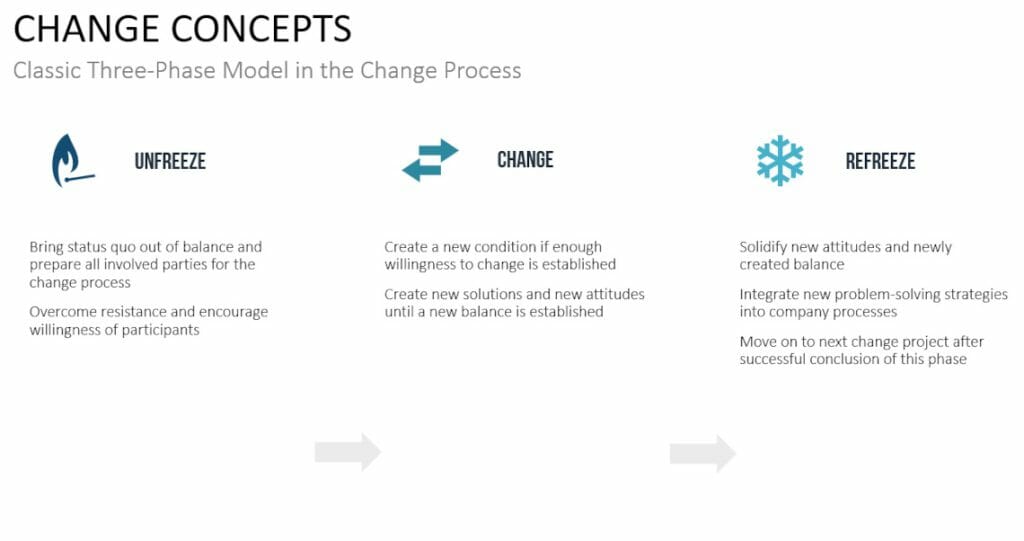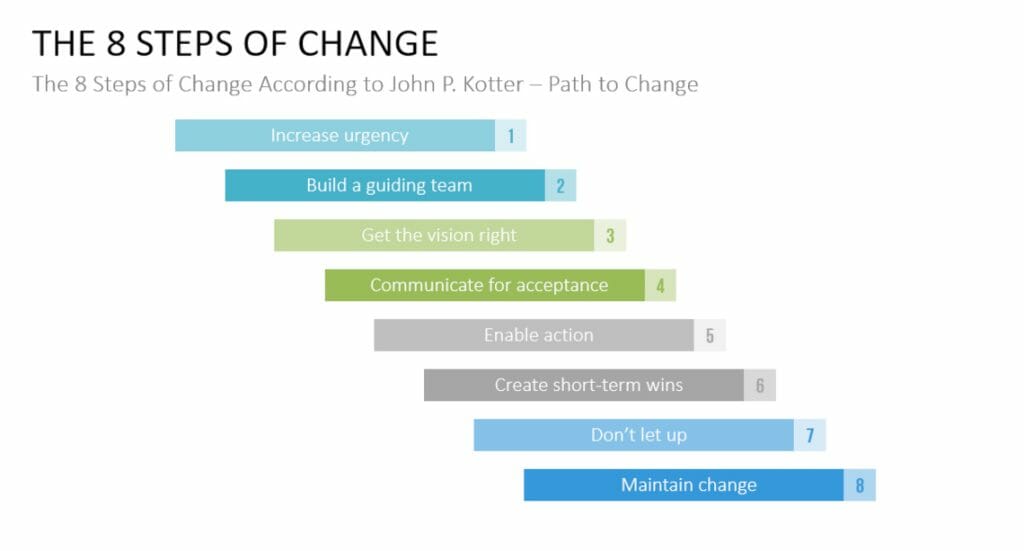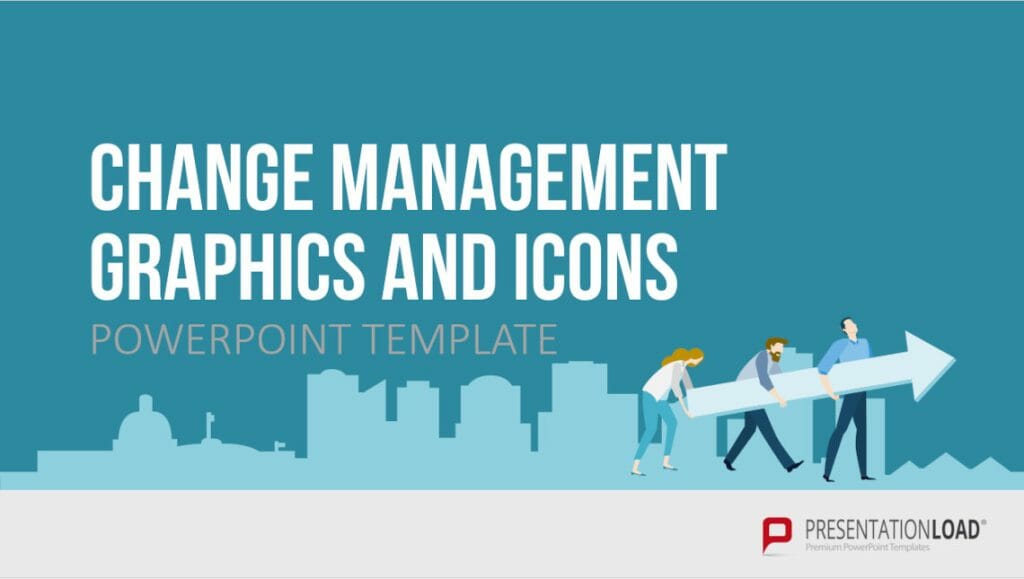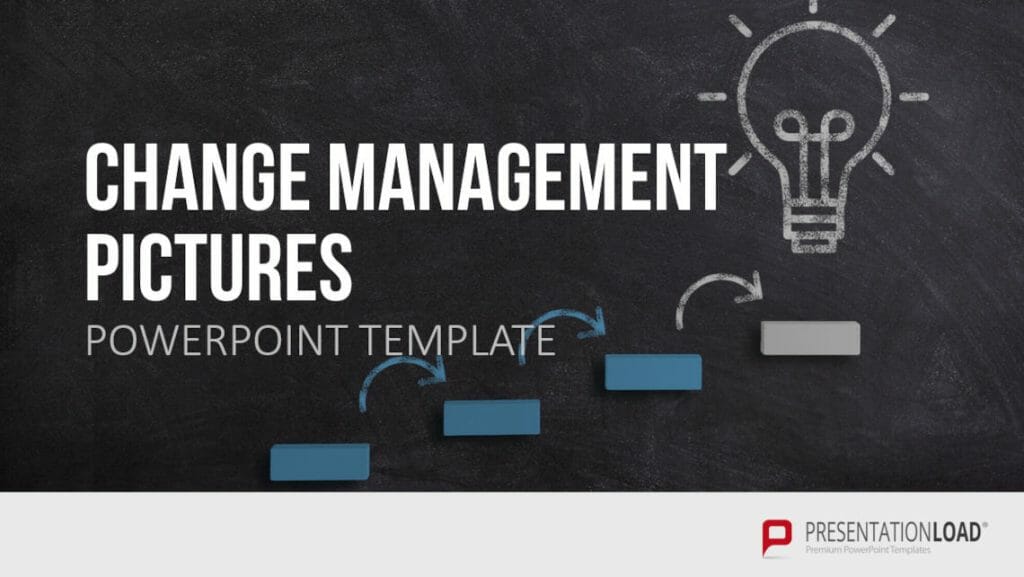
Change Management: Discover 2 Models!
Change management, also known as organizational change management, deals with profound changes within companies. These changes can affect structures, processes, and behaviors, among others.
In this article, we will introduce you to two fundamental approaches of change management. Additionally, we will explain the advantages and disadvantages of change management.
Change Management – Time for Change?
Change management, also known as organizational change management, deals with profound changes within companies. These changes can affect structures, processes, and behaviors, among others.
In this article, we will introduce you to two fundamental approaches of change management. Additionally, we will explain the advantages and disadvantages of change management.
Change Management – Time for Change?
Change – it simply means “transformation.” And that’s exactly what this article is about, because as Heraclitus once wrote, “The only constant in the universe is change.”
Companies are constantly confronted with processes of change, triggered both internally and externally. And only when structures and strategies are adapted to changing conditions can a company survive in the globalized economy.
Internal triggers for such changes can include a redefinition of the corporate strategy, the introduction of new management concepts, or changes in the personnel structure.
External triggers for change management can be new competitors, changing customer demands, technological advancements, and new political or economic guidelines.
In order to withstand both internal and external changes and remain competitive, companies must be able to adapt. It is important that employees are involved in the transformation and convinced of the necessity of the change process. Only then can the implementation of changes be driven forward.
Feel free to visit our Change Management Guide in the shop. Here you will find more information, professionally designed PowerPoint slides, and communication strategies related to change management.

The 3-Phase Model by Kurt Lewin

As mentioned at the beginning of the article, we present two fundamental approaches of change management. The first approach is called the 3-Phase Model, formulated by psychologist Kurt Lewin. In this model, Lewin describes the individual steps that a company goes through during the change process.
#1: Unfreezing
In this first phase of the process, all stakeholders are prepared for the change process. Additionally, the problems of the current state are identified. It is important to ensure support, for example from leadership positions. Introducing a change process alone and without backing is futile.
Furthermore, it is necessary to clearly communicate the meaning and necessity of the change. This builds the willingness among employees to embrace the change.
In this first phase, the focus is on information and analysis, not directly on change.
#2: Change
This phase, compared to the first and last phase, is somewhat self-explanatory and describes the process of actual changes. The discussed processes are introduced, departments may be restructured, and new concepts are tested and established.
In this phase, it is particularly important that the changes are accepted by everyone. Therefore, it is crucial to clearly communicate all changes, benefits, and progress. Additionally, address any emerging questions openly and honestly to dispel concerns and rumors among employees.
Implementing change processes is not always easy, especially when some participants anticipate disadvantages. It is important to invest time in clarifying the process.
#3: Refreezing
This phase occurs after the changes have been implemented in the company. It ensures that the changes are sustained and internalized by employees. This ensures that old patterns are not reverted to and that the changes are maintained.
This can be achieved through management support, employee feedback, and communication. Additionally, you can support employees by offering training and coaching, helping them adapt to the new processes and ensuring that the changes are maintained.
Disadvantages of the 3-Phase Model
Although the model is relatively easy to implement, it is sometimes criticized for being too simplistic. In modern companies, change processes often occur so quickly that a refreezing phase no longer takes place.
For this reason, it is sometimes argued that the model is outdated. Taking the time to address all three phases can be challenging when the changes we experience happen too quickly.
However, it can be advantageous to take the time to implement change sustainably and go through all three phases.
Change Process in 8 Steps by John P. Kotter

Many newer change management theories have their origins in the work of Harvard Business School professor John P. Kotter. The 8-Step Model represents successful organizational change and has been continuously refined
Many newer change management theories have their origins in the work of Harvard Business School professor John P. Kotter. The 8-step model represents successful organizational change and has been continuously refined since 1996, widely used by many consultancies today.
As the model takes a holistic approach to implementing profound change, it is essential to complete all the steps. These steps can be divided into three phases, which we will outline in this paragraph.
The first phase, called “Creating a Sense of Urgency,” involves:
#1: Generating a sense of urgency
Ensure that employees support and stand behind the desired changes. Convince them of the necessity and urgency of the change. Highlight the opportunities and risks that arise from the process and appeal to the emotions of your employees. One effective method is storytelling, which you can learn more about in our blog article.
#2: Building a guiding coalition
Assemble a strong leadership coalition that represents the entire organization. The coalition should possess credibility, expertise, and leadership qualities while pursuing common goals.
#3: Developing a vision of change and an implementation plan
The appointed leadership team should now develop a vision for the future. This vision should serve as a decision-making basis, motivate employees, and efficiently coordinate actions. Additionally, the vision should foster unity and purpose.
The next phase, the “Moving and Adapting” phase, involves:
#4: Promoting the vision to convince employees
The effort required for this is often underestimated. As mentioned in step #1, storytelling is an excellent method to bring your vision to life and make it understandable for all employees. If the leadership team sets a good example and aligns behaviors with the vision and strategy, trust can be built, and motivation can be fostered.
#5: Granting employees broad decision-making authority
This motivates employees and empowers them to act in accordance with the changes. It is crucial that all stakeholders have access to competitive and market information. This allows for a smooth exchange of information and efficient work processes.
#6: Enabling short-term wins
Setting short-term goals helps maintain the motivation of all stakeholders. Additionally, quick wins have the advantage of neutralizing criticism from change skeptics.
The third and final phase, the “Freezing” phase, is based on:
#7: Securing achieved successes and driving further changes
While short-term wins significantly contribute to long-term goal attainment, it is important not to rest on one’s laurels. Utilize the gained credibility to initiate further changes and involve additional groups of people in the process.
#8: Anchoring changes sustainably
When all goals have been achieved, the implemented changes must be embedded in the organizational culture to ensure long-term sustainability. It is crucial that new and existing employees, as well as leaders, believe in and embody the new direction.
Disadvantages of the John P. Kotter’s model
Although Kotter’s model offers more detail compared to Lewin’s model, it can appear very linear. The model does not address potential setbacks or challenges. Additionally, steps 1-6 may be relatively easy to achieve, but anchoring changes sustainably can take years and be a lengthy process.
Nevertheless, Kotter’s model continues to shape change management practices and is still successfully applied today.
Fazit: Embrace Change!
As a modern company, it is essential to respond flexibly to the challenges of change and not shy away from it.
In order to successfully promote, plan, and drive change management in your organization, we have we have compiled our change management products for you here:
You can find all templates as well as other templates on various (business) topics in our shop.
Do you have any questions about this article? Feel free to contact us by email at [email protected]. We will help you!
Are you looking for visually supporting and professionally designed slide templates? Take a look around in our shop. Here we have numerous slides prepared for you on a wide variety of (business) topics for downloading. Take a look today! ► To the shop
These articles might also be interesting for you:









